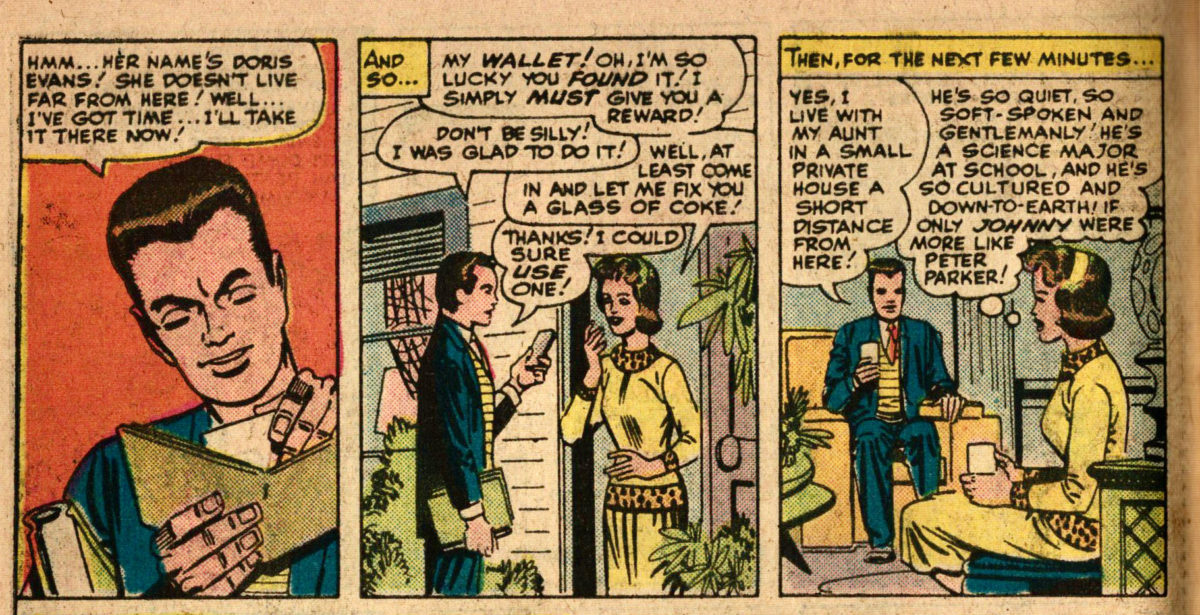Featuring: Captain America
Release: February 10, 1966
Cover: May 1966
12 cents
Script: Stan Lee
Layouts: Jack Kirby
Penciling: John Romita
Inking: Frank Ray
Lettering: Sam Rosen
Kibitzing: Irving Forbush
10 pages
| Previous | #512 | Next |
|---|---|---|
| Tales of Suspense #77 | Reading order | Tales of Suspense #78 |
| Tales of Suspense #77 | Tales of Suspense | Tales of Suspense #78 |
Oh, Cap… Cap… will this war never end? Will we never be able to lead normal lives? How can we speak of love… when the world is in flames… when I don’t even know your name!

With famed romance artist John Romita on pencils, we will learn the story of the “girl from Cap’s past”. There’s going to be some confusion here. A lot of confusion, in fact. So let’s review what we know.
Two issues ago, Cap encountered a female SHIELD agent who reminded him of an old flame. This SHIELD agent has an older sister who once dated a man named Steve Rogers.
We see the final parting of Cap and this woman in his memory. We’ll recall it here for reference.

Not a lot of details about this woman to go off, but enough that this issue will find a dozen ways to contradict them.
A documentary about Cap’s role in the liberation of Paris stirs up Cap’s memories. He notes it’s been over 20 years. He lost her that day and never learned what became of her, if she survived the war or not.
“That lightning and thunder… it’s like the angry roar of the past… trying to capture me again!”
Continue reading “Tales of Suspense #77, Story B”



























